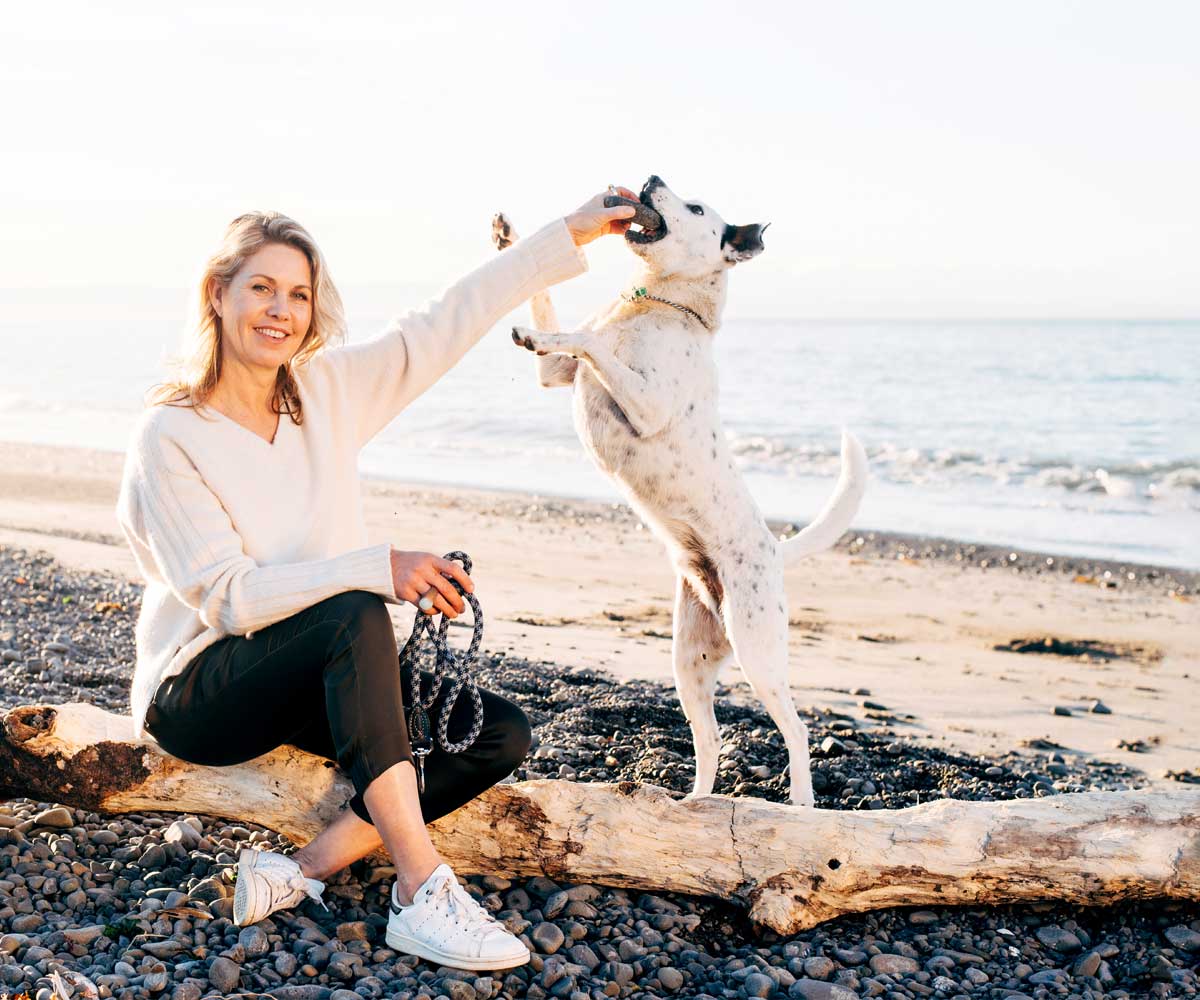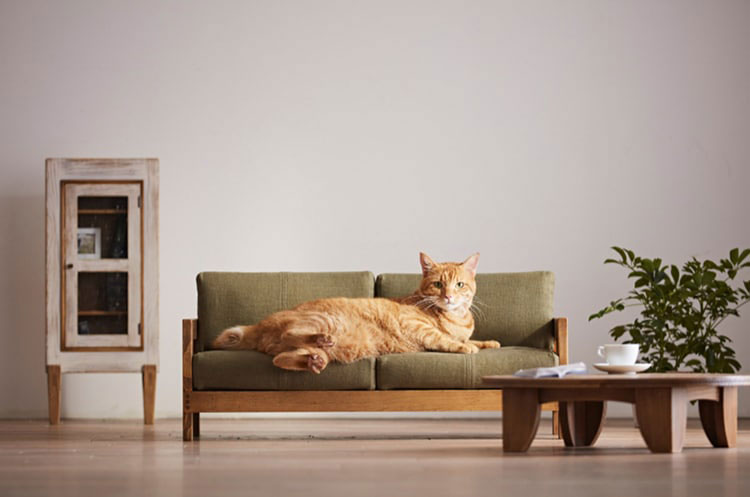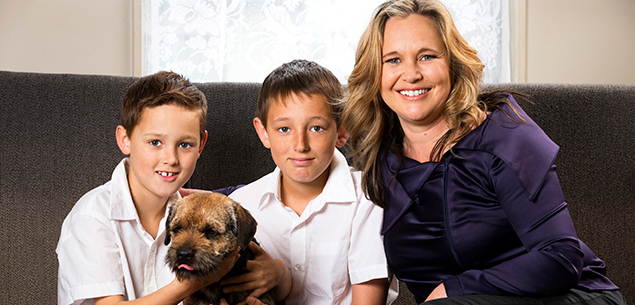New Zealand has some of the highest rates of pet ownership in the world, which has led to a range of inspired businesses catering to our four-legged pals. We talk to three Kiwi women who are paving the way with pet-focused businesses.
Annika Bennet: The pet food entrpreneur
Even the most devoted pet owner slips up occasionally. Annika Bennett might be so attached to her furry friends she shelled out thousands to fly her three cats from London to Hawke’s Bay, but she has been well acquainted with the dilemma of running out of animal food.
And although on those occasions the 50-year-old was more inclined to feed her two dogs fillet steak rather than the tin of beans many of us might resort to, that doesn’t mean the guilt didn’t weigh on her mind – with unexpected consequences.
“It was one of those crazy days when I didn’t have any dog food,” says the mum-of-one, recalling the light-bulb moment that would take her on a new career path. “And I was thinking, ‘I get My Food Bag delivered out here, why the heck doesn’t anyone do a My Dog Food Bag?'”
She discussed the idea with lifelong friend and fellow animal lover Charlotte Marshall, and together the duo pledged to create a meal delivery service for pets. Today, just over a year later, they have launched Paw Paw.
“I haven’t been able to find anything else like it anywhere in the world,” says Annika, who hopes to take the business into Australia in the coming months.
“Everyone wants to do the right thing by their animals, but they are time-poor and also want their lives to be that bit simpler. To have someone do the thinking for you – we just think it’s a really good idea.”
With a background in marketing and sales, Annika has launched and run businesses both in the UK and locally, but her obsession with animals was always more hobby than career opportunity.
Having grown up surrounded by pets, she didn’t let emigrating to the British capital prevent her having cats, but it wasn’t until she returned to New Zealand eight years ago that she and son Barney, now 16, fulfilled their dream of dog ownership.
“We’d been back about seven minutes and Barney asked when we were going to get a dog,” laughs Annika, who adopted rescue heeler cross Sid soon after, who was quickly followed by Labrador Nelly.
Passionate about taking good care of her furry family, Annika has always educated herself on good pet nutrition. But living 20km out of Napier in Te Awanga, she found if she forgot to stock up on dog food, she’d end up scrambling to find feeding time solutions.
“People tell me they boil eggs, cook up rice… I’ve had the odd disaster where I’ve fed cat food to the dogs,” she admits.
“It’s not the way we should be doing it.”
Since deciding to pursue Paw Paw, Annika has continued to run her interior design business, but along with Auckland-based real estate agent Charlotte, has also devoted thousands of hours to researching ideal dog foods. Taking advice from kennel owners, vets and pet nutritionists, the duo also had their dogs involved in taste testing.
“My dogs have been on a different food every week for the past 50 weeks,” reveals Annika with a smile. “We thought we were doing the right things by our dogs but discovered things like treats really weren’t good for them.”
Paw Paw works by delivering to customers a choice of six different food boxes, which range from gourmet to grain-free and come in varying sizes according to the weight of the dog. They can be amended according to specific dietary requirements, and each contains enough food for 14 days. There will also be occasional home-baked treats – including cake for dogs’ birthdays – as well as the odd recipe.
Annika is proof that to work with animals you don’t need a specific skill set – or even to live in a big city. Her advice to others who would like to turn their pet passion into a career? “Just have a good idea and put the hard work in.”
Annika’s top feeding tips
Remember to count the calories – 20 tiny treats add up to another bowl of food.
Keep an eye on the total amount consumed and ensure they don’t go over that daily intake each day.
Natural chews, such as venison ears, are great for canine teeth, but raw carrots and broccoli work too.
Ensure their dry foods contain plenty of good oils, like omega 3s.
As with humans, if your dog has a good balanced diet you shouldn’t need too many supplements, but do take advice from the vet.
Rachael Hale McKenna: The animal photographer

It was a pig that kickstarted the career of Rachael Hale McKenna – and not even a particularly attractive one.
That short, fat, hairy kunekune was the subject of an image that launched the arts graduate on an incredible path that has seen her photographs adorn everything from greetings cards to stationery in stores around the globe.
At the age of 23, Rachael had already excelled at both Auckland Society of Arts and Wellington Polytech Design School, not to mention the three years spent working with legendary baby portrait photographer Anne Geddes.
Keen to set up her own business, but lacking the funds, Rachael entered a photographic competition to win a set of studio lights – the main criteria being that the image had to include a watch.

Slim, Pluto and Oscar, photographed by Rachael.
“I just woke up one night with this idea – I could put a watch on a pig,” recalls the mum-of-one, who as a student had loved taking pictures of animals.
“It was a bit random, but I found this incredibly ugly pig, I made a watch with a belt and an alarm clock that went around the pig’s neck and I photographed it with a large-format camera. It won me the competition, and then, as a result of the publicity, a publishing company approached me and commissioned me to do an entire animal range based on that one image – it started my whole career.”
Known then as Rachael Hale, she became internationally renowned for her creative portraits of animals, from snoozing tigers to dogs on roller skates.
Getting animals to play ball in a photo shoot is no easy feat, but the 47-year-old’s photography skills combined with her calm manner and innate empathy with animals are a winning combination.
“I reckon I must have been a dog in a past life,” she says with a laugh, adding that whether working with grumpy lion cubs or skittish cats, “there is something about me that animals just seem to love.”
Just over a decade ago, Rachael decided her career needed a tweak. She had begun to feel unfulfilled by creating the staged, cutesy shots that had made her so successful, so she left what had become a multi-million dollar enterprise, to instead focus on what she loved.

Merlin the cat, photographed by Rachael.
“I have always been the type to follow my heart,” she explains. “If it’s really what I believe in, I’ll do it – and my passion lies in creating really beautiful, natural images.”
With husband Andy McKenna, Rachael moved to France, where she travelled around taking photographs for best-selling book The French Cat – having a baby along the way, Charlize, now eight. Next, the family moved to the US to shoot The New York Dog.
But being in the Big Apple didn’t give the trio a taste for the city, and on their return to New Zealand it was the rural life they craved – not least because it suits the fourth member of their family, Flash the dog.
Chatting to NEXT while walking the Jack Russell through the farmland behind her Wanaka home, Rachael reveals she’d never return to Auckland – “because it’s so limiting what you can do with your pets.”
And the beauty of her craft is it can be done anywhere.
The photographer, who has sold more than three million books, released her 19th, The New Zealand Cat, last year and is now focusing on private commissions.
While it’s work that is less abundant outside the main centres, she has found a way to juggle it all. “I’m often in Auckland or Christchurch and I do shoots overseas,” she says as she watches her dog Flash chase after rabbits.
“But I’ve chosen to live here because it’s the lifestyle I want, it’s just so beautiful, there are no limitations.”
In essence, it’s picture perfect.

Smudge the cat, photographed by Rachael.
Rachael’s tips for photographing pets
Choose the right time of day for them. If you’ve got energetic dogs, take them for a walk first.
Be patient. Don’t ever force an animal to do something – they need to trust you and feel they are in a comfortable environment.
When photographing dogs, it’s best to keep food out of it – they become far too fixated on it.
Feather teasers are great for cats, and you can also bring food into it with them, placing a trail of food to the spot where you want them to go.
Helen Morphew: The dog masseuse

When SPCA volunteer Helen Morphew was told a massage therapist was coming to the Auckland shelter to work with the dogs, she admits she was skeptical.
“We all kind of sniggered a bit – it was like really? Massage? Are you kidding me?”
Yet that visit by a British dog masseuse changed Helen’s life irrevocably. Just months later the 46-year-old had given up her high-flying career in human resources and was in the US, enrolled in an intensive advanced canine massage course.
Today, four years on, Helen is running a thriving business, Auckland Canine Massage, with three clinics around the city and a client list that includes vets who seek her services for their own dogs.
“It just completely resonated with me,” she explains. “I’ve always had massage myself and I realised I could combine my love of dogs with providing a therapeutic benefit.”
The decision wasn’t completely out of left field for Helen, who had always dreamed of working with dogs. However, when it came to choosing a career in her younger years, she recalls that, apart from becoming a vet, “there wasn’t really much out there.”
Launching a new business – especially in an industry yet to gain traction in New Zealand – is not for the faint-hearted. And while she had the full backing of husband Rob and her family, Helen found the experience of arriving at the Chicago School of Canine Massage overwhelming.
“I landed and I don’t think I ate or slept for two days,” she says, adding she chose Chicago believing it offered the best training available.
“I had this dreadful feeling of ‘What on earth am I doing? This is crazy!’ But the moment I started that course I knew it was the right thing. It was really intensive and mentally draining but it all fit into place.”
And it paid off, with Helen becoming the first New Zealander to be a certified member of the widely lauded National Board of Certification for Animal Acupressure and Massage. Her qualifications combined with her natural ability with dogs has quickly made Helen much sought after by both owners and vet students – who she presents lectures to.
That’s not to say she hasn’t encountered cynicism – “when I first started friends would just laugh at me” – but her clear knowledge, practical approach and deep passion quickly dispels any doubt about the efficacy of what she does.
“If you wrap up the benefits, you see they’re much like those for humans,” says Helen, who once a week gives up her time to massage rescue dogs at the SPCA.
“Canine massage can help reduce pain, improve flexibility, assist recovery from injury, reduce anxiety… all those reasons we go for massage.”
She admits that starting the business hasn’t been easy – “it’s a massive financial hit and there’s no guarantee it is going to work out” – but she is motivated by positive feedback, and the fact that increasingly vets recognise the benefits of massage and refer owners to her.
“I absolutely love it, I really do,” enthuses Helen, whose own dog Asha is an “SPCA special” of an undetermined breed.
“I guess I was completely driven and determined. I never queried what I was doing, but I did wonder, ‘Oh my gosh, is this going to work?!'”
Happily, she took the plunge at the right time, with the nation’s love affair with their dogs at an all-time high.
She’s unsure if dog massage would have been a viable business option a decade ago, but believes attitudes towards our pets have changed in recent years.
“I think we’re evolving in our view of dogs as members of the family,” she says. “We’re understanding more about their emotional wellbeing.”
And she hopes that as that understanding deepens, canine massage will become an increasingly common choice for owners wanting to provide the best care possible.
“My ultimate goal would be that people view canine massage as a mainstream offering. So that it sits nicely alongside vets as an integrative therapy.”
Helen’s tips for massaging your own dog
Pick your moment, ensuring it’s at least one hour after feeding time to allow for digestion, and your dog has relieved itself.
Make the environment comfy – use a favourite mat or bed, placed on the floor or your lap.
Be calm and gentle – less is more. Place two fingers on your eyelid over your eyeball – that is the level of pressure to use on your dog.
Go with the flow of blood, from the heart out to the extremities and back again.
Always watch for feedback and ensure your dog is willing – don’t force or restrain it.


